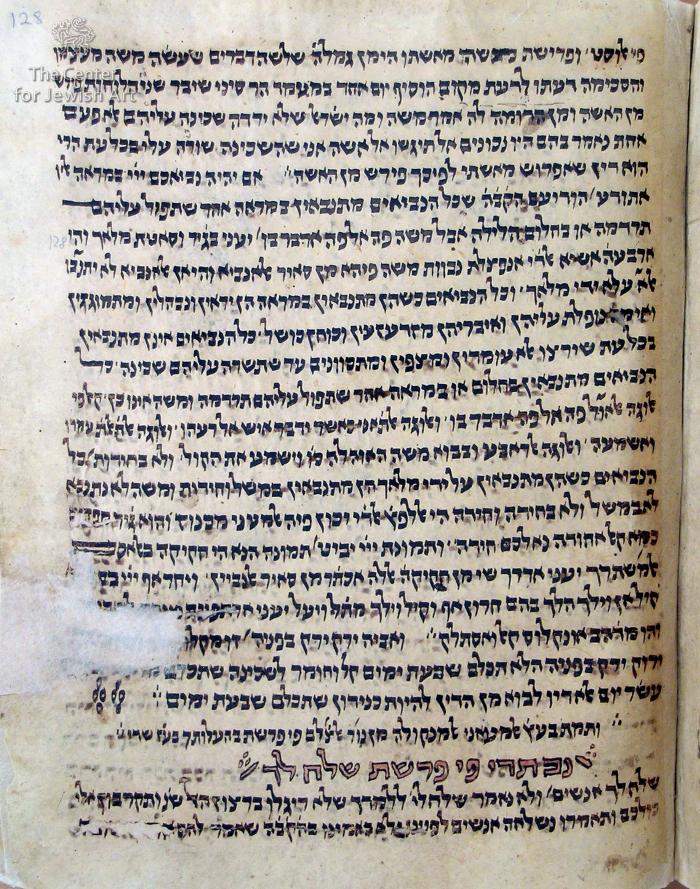
The following description was prepared by William Gross:
Manuscript, Midrash Nur Eltzalem [Ma’Or HaAfela], by Rabbi Netanel Ben Yishaya.
Rabbi Netanel ben Yishaya, among the first great scholars of Yemen, who lived during the first half of the 14th century, authored the Ma’or HaAfela composition in 1329. This Talmudic legend was originally written in Jewish Arabic and was one of the basic books on Judaism in Yemen. The author integrated philosophical and Kabbalistic concepts with literal and homiletic commentaries and explanations, according to the order of the weekly Torah portions.
Ancient Yemenite writing on quality paper. The most extraordinary feature of these pages is the decoration using images, done in red ink, which include illustrations of the borders of the holy land, the temple menorah, and a truly outstanding image of the ark of the covenant with the cherubim, which are presented as human figures with wings. The use of human figures in Yemenite manuscripts is exceedingly rare. The Islamic culture of the area had strong proscriptions against such depictions and decoration was most normally geometric.
This manuscript is one of the most ancient forms of the composition. Yemen, 15th century. Pages: 163



